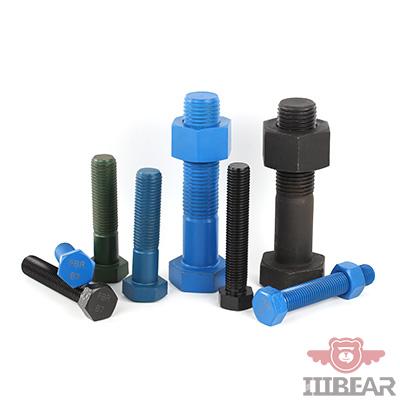In today’s fast-paced industrial environment, high-strength fasteners are critical components for ensuring the integrity and durability of modern engineering projects. As industries such as construction, automotive, and aerospace continue to evolve, the demand for fasteners that can withstand extreme loads, vibrations, and environmental conditions has risen sharply. Whether you are assembling a bridge, an automobile, or a wind turbine, selecting the right fasteners is key to achieving long-lasting, safe, and reliable results.

Understanding High-Strength Fasteners
High-strength fasteners are designed to offer superior mechanical performance, particularly in high-stress environments. Typically made from materials like alloy steel, stainless steel, and titanium, these fasteners are built to resist high levels of tension, shear, and fatigue. They are most commonly used in critical load-bearing applications such as structural frameworks, heavy machinery, and transportation systems. Common types of high-strength fasteners include bolts, nuts, and washers, all of which contribute to the overall stability of the assembly.
Fasteners are often classified by their strength grades, with Grade 8 and Grade 10.9 bolts being some of the most widely used for heavy-duty applications. These fasteners undergo rigorous testing to meet industry standards and certifications, ensuring they can handle the pressures of modern engineering demands.
Applications Across Industries
One of the reasons high-strength fasteners are indispensable is their versatility across multiple industries. In construction, they are used to connect steel beams and concrete forms, ensuring the structural integrity of buildings, bridges, and towers. In the automotive sector, fasteners must be able to withstand the high levels of stress that occur during vehicle operation, particularly in areas like engine assemblies, suspensions, and transmissions. Similarly, the aerospace industry demands fasteners that can endure extreme pressures and temperatures, maintaining aircraft safety during flight.
In the renewable energy sector, wind turbines and solar panel installations rely heavily on durable fasteners to withstand weather conditions and operational loads. Without reliable fastening systems, these installations would be prone to failures, leading to costly repairs and downtime. High-strength fasteners are also used in robotics, where precision and strength are critical to machine functionality.
Choosing the Right Fasteners for Your Needs
When selecting fasteners for your project, it’s crucial to consider factors such as the load capacity, environmental conditions, and material compatibility. For example, in corrosive environments like offshore oil rigs or chemical plants, stainless steel fasteners are ideal due to their resistance to rust and chemical degradation. On the other hand, in high-heat applications such as automotive engines or aerospace, titanium fasteners are favored for their lightweight and high-temperature resistance properties.
Another important consideration is the coating or treatment applied to the fasteners. Zinc plating, galvanizing, and anodizing are common treatments used to enhance the corrosion resistance of fasteners. By choosing the right material and treatment, you can extend the life of your fasteners, reducing the risk of failures and minimizing maintenance costs.
Latest Trends in Fastener Technology
The fastener industry is not immune to technological advancements, and recent innovations have led to the development of smarter, more efficient fastening solutions. One of the notable trends is the increasing use of self-locking fasteners, which offer improved vibration resistance, making them ideal for automotive and aerospace applications where loose fasteners can pose serious safety risks. Additionally, fasteners equipped with sensors are becoming more popular. These sensors can monitor the tension and load on the fastener, providing real-time data to ensure that the assembly remains secure.
As industries continue to adopt more automation in their manufacturing processes, there is also a growing demand for fasteners that are compatible with automated assembly systems. This shift towards automation is driving the need for faster and more accurate fastening technologies that can meet the production demands of modern engineering.
Conclusion
High-strength fasteners play a pivotal role in the success of modern engineering projects across a wide range of industries. Whether it’s ensuring the safety of a high-rise building or keeping a jetliner airborne, choosing the right fasteners is critical. As technology continues to evolve, so do the fasteners we rely on to build the world around us. By staying informed about the latest trends and advancements in fastener technology, engineers and manufacturers can ensure their projects meet the highest standards of safety, reliability, and performance.

